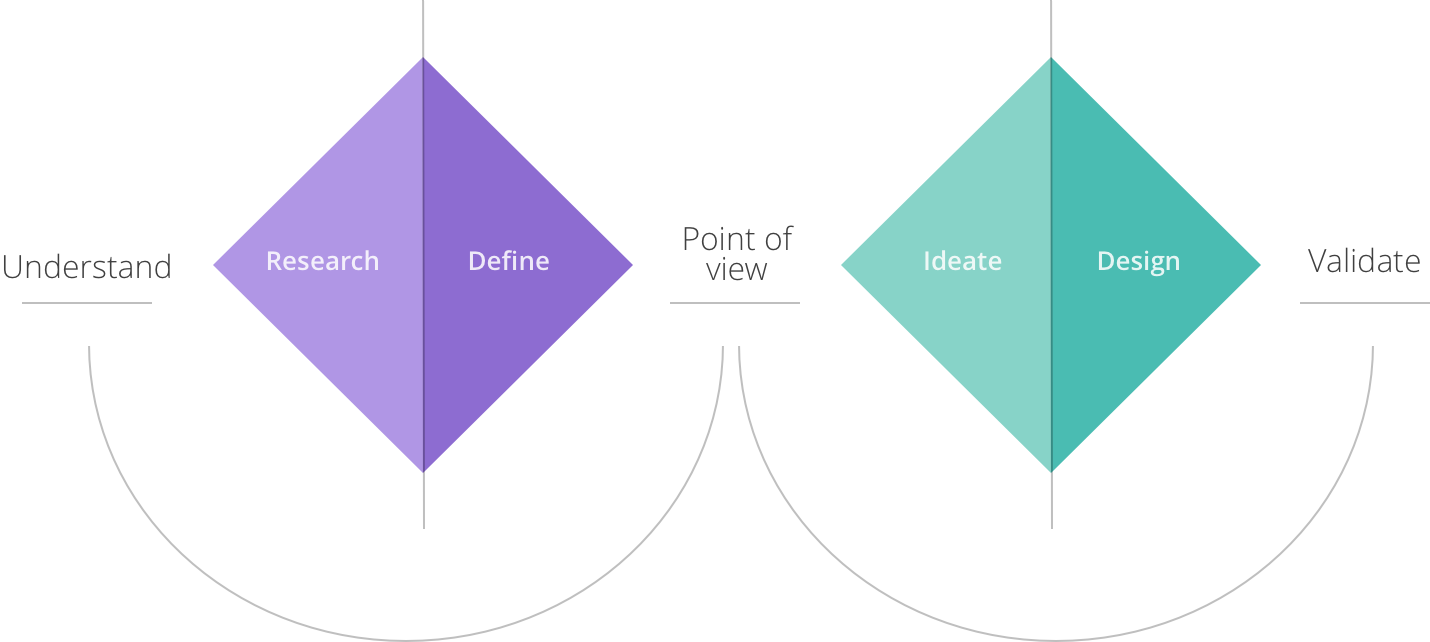Together with a senior solution consultant, we worked with the customer´s transformation office to create an integrated vision for their CRM, intelligent automation and marketing capabilities. In two weeks, we analyzed business needs and determined business objectives for the transformation.
CRM Transformation case study
Design & Innovation Lead
Project description
We identified a starting point by evaluating the impact on the different lines of business and created a validated solution concept that streamlines processes and improves handling time. The validated design prototype has demonstrated the client key capabilities that they require in order to address consumer and business needs in a meaningful way and deliver relevant offers at speed.
Approach and Research Deliverables
Design Thinking and rapid prototyping
General approach
We applied a design thinking approach to the project and conducted research across the 4 major lines of business of the client´s organization. The objective was to obtain an understanding of the status quo and identify business needs towards a new CRM system.


Contextual and standardized research
I applied a research approach, in form of a series of workshops with the consumer sales-, B2B sales-, logistics departments, the editorial office as well as the inhouse contact center. Through a common set of tools, I was able to create comparable insights, that served as a basis for establishing a shared vision, a baseline for automation.
Together with the client, we evaluated different factors of their business, reported back on our research findings and empowered them to take an informed decision on the starting point of their transformation, through the analysis we provided.
Current-future-barriers
With this exercise we determined the current state of the respective department, aligned on a potential future vision in order to derive business objectives and uncovered obstacles that prevent stakeholders from achieving their vision and goals. This allowed us to understand the nature of the challenges within each department, assess whether it can be overcome with technology, and identify a way forward.

Process landscape
Next, we collected core processes of each department and mapped them to the 3 most critical business factors. These factors were identified by customers and differed for each department.
We then sorted the selection of processes by manual effort and volume and repeatability in order to identify those with the highest value for automation.

Stakeholder analysis
Around the processes with high value,
we mapped and analysed stakeholders in order to understand their interactions and objectives.
This exercise helped to comprehend the bigger picture, while determining a potential scope and end-user group for the future solution.

Use case & journey mapping
Finally, together with customer, we put together a coherent and rounded use case, that can serve as a basis for solution development and can be used for organizational change management. During this exercise, we applied a canvas that, I have created with experts from business and technology and that provides answers to the most critical questions around product, business and technology.

Results & Recommendations
In an executive playback session, we reported our findings to the client´s transformation office. Together with the respective department heads and senior stakeholders, we facilitated a discussion on how a future CRM system should be looking like and which capabilities, it needs to entail.
Based on our analysis and together with the customer, we have evaluated the 4 business areas in regards to business growth, complexity and feasibility and recommended a starting point for their digital transformation. This created confidence and led to an informed decision to move forward with the consumer sales department.

Ideation, Conceptualization & Validation
Facilitation & Design

We identified the subscription manager as critical persona for business development in consumer sales. Through interviews, we gathered insights on goals, tasks, user needs and pain points and derived a distinctive point of view. Next, we mapped the persona`s user journey with pain points and opportunities for improvement along the workflow. To resolve these pain points, we applied the SCAMPER framework for workflow optimization and structured ideation.
Configurable dashboards
For the design prototype I have applied Pega´s cosmos design system to showcase the design maturity of the platform and provide end-users a tangible look and feel on how a future CRM system could look like. With configurable dashboards end-users can visualize and aggregate and drill-down on any available data, to understand and manage their sales activities.
Omni-channel customer engagement
Automating the workflow process, the solution was designed to segment consumers by engagement channel, qualify leads, propose right offers and assign the right case worker. Through Pega´s central brain and 1:1 marketing algorithm, manual processing is reduced to a minimum. Subscription managers only need to accept the proposed engagement strategy or edit and reject when an individual approach is more suitable.
Next Best Action
The solution automatically provides “next best actions” on individual customer level across all engagement channels. Pega´s central brain learns from every customer interaction and proposes actions and products with the highest probability for conversion and upsale. It provides a comprehensive 360 view on the customer and makes sure every customer interaction is meaningful.
The prototype was validated with end-users.





